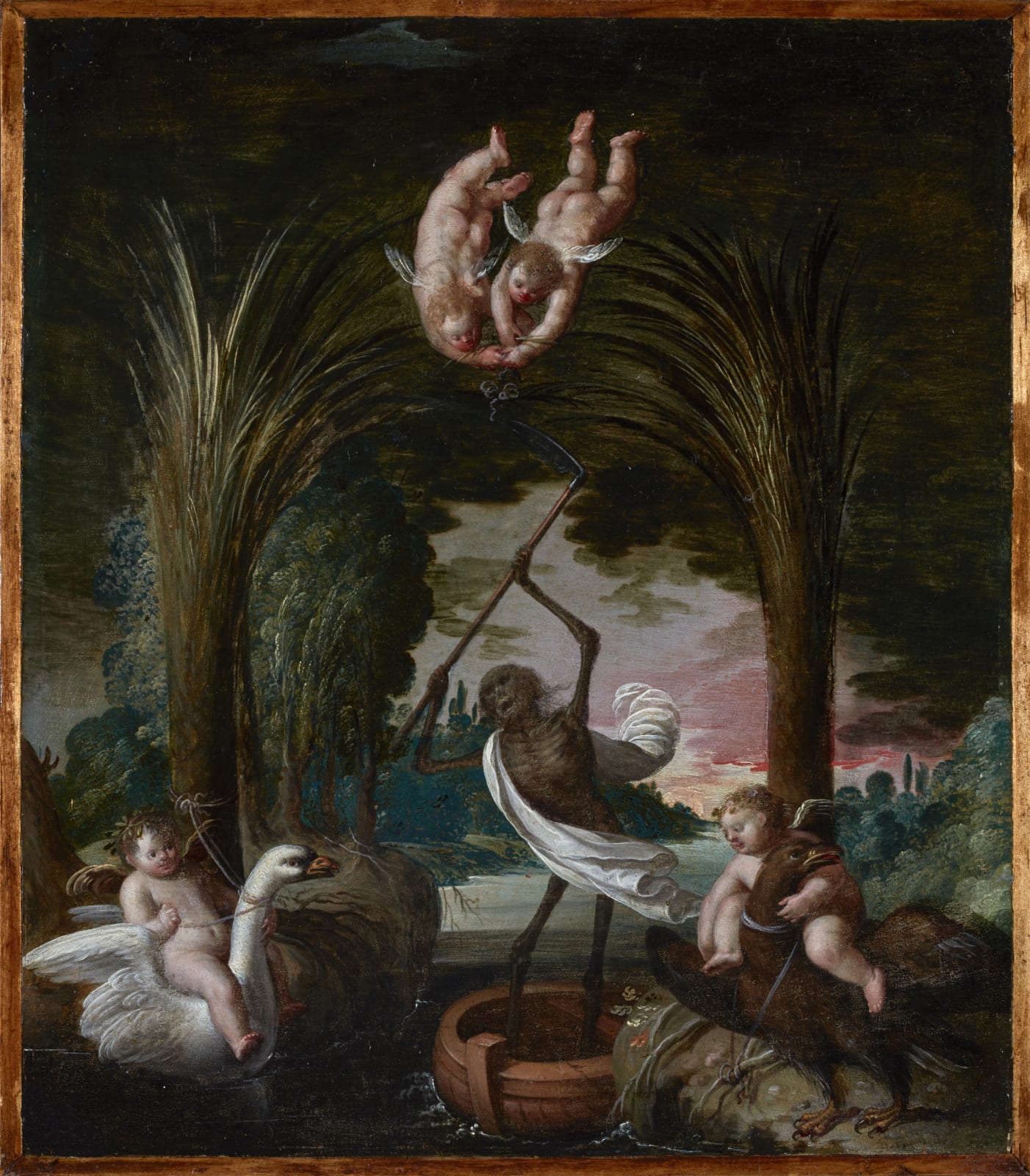Circle of Johann König (1586-1642)
Provenance
Frederick Mont Collection, New York.
On the left n. putto rides a swan (the symbol of Venus) and on the right another rides an eagle (the symbol of Jupiter). These putti represent in this way Eros and Anteros; Eros as earthly love and Anteros as celestial love (the eagle being associated with Jupiter because of its lofty nobility of mind.) For the early 17tb century these two loves can be interpreted also as the Flesh and the Spirit, the two elements of human love. Since both putti and their steeds are tied up, this must indicate the contest of heavenly and earthly love, which was represented in the four corners of the Galleria Farnese by Annibale Carracci (see J. R. Martin, The Farnese Gallery [1965], pp. 86-89, pis. 39-42). However, the interpolation of Death (as Charon in his boat) introduces a northern conception that Death with his scythe (identical to Time) intervenes before the struggle takes place, for at the top of his scythe two other putti (i. e. Eros and Anteros now reconciled) hold a palm branch (see Cartari, Imagini [1647], reprint Graz, 1963, p. 259) and a riband, possibly representing a wreath, the emblem of celestial love (see Alciati, Emblemata, CIX). Briefly, while the Flesh and Spirit of earthly love prepare for their contest, Death intervenes to emphasize that, through him (Death), the true celestial love will be attained. The context of this interpretation may be found in the writings of St. Theresa (first published in 1587) and also in those of the Jesuits, where the temporal struggle of the Flesh and the Spirit only to be resolved in celestial love — The Ecstasy of Death — is a fundamental discussion. This seems because of the presence of Death to be a more reasonable interpretation than that the allegory is of the Neoplatonic concept of sacred and profane love. (The compiler is indebted to Peter Tomory for this analysis of the subject.)
Read essay
